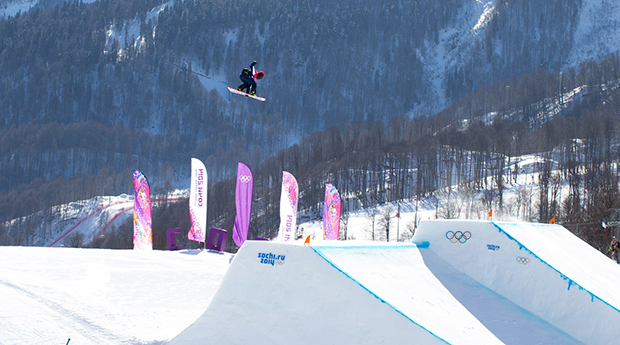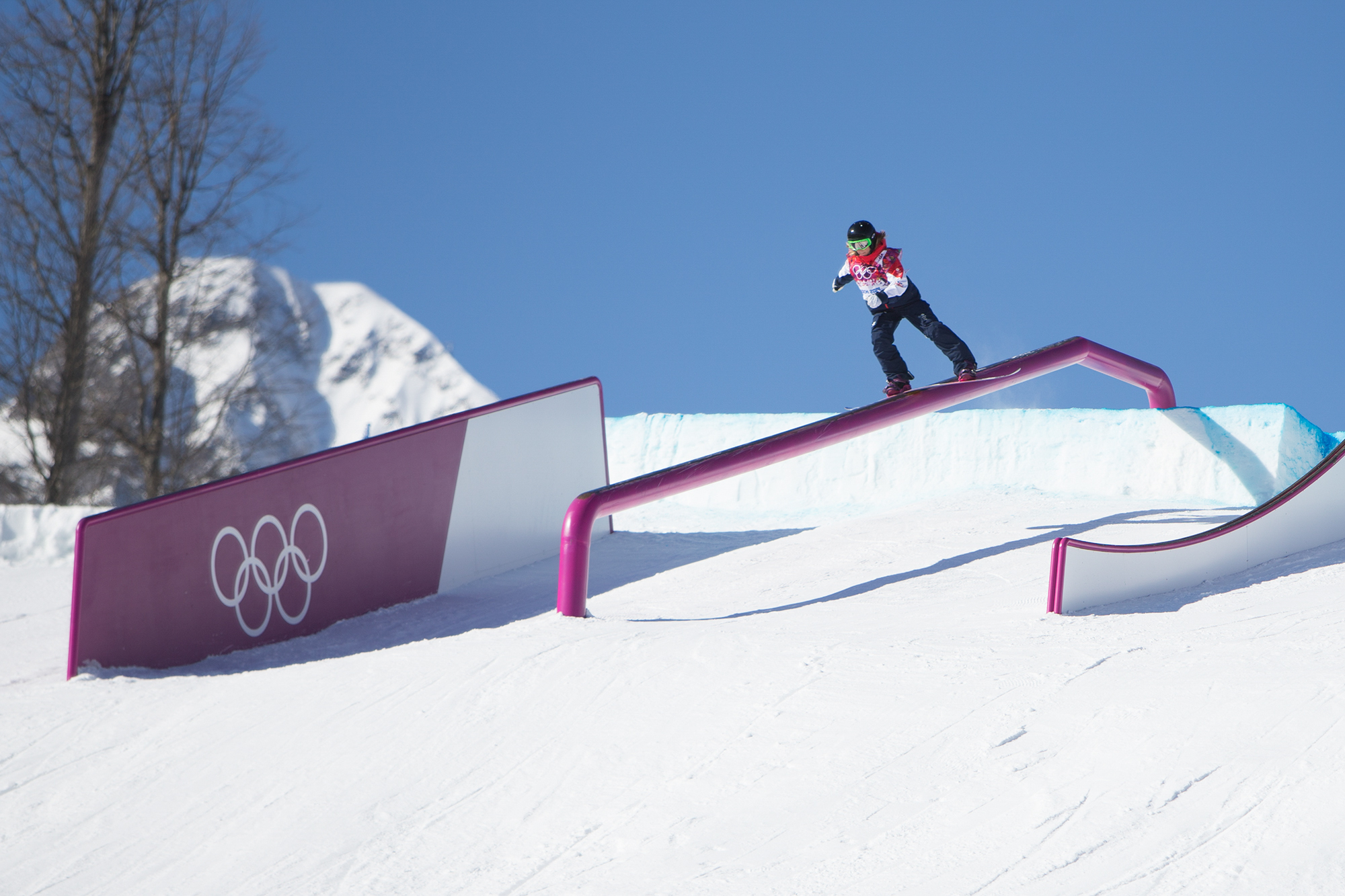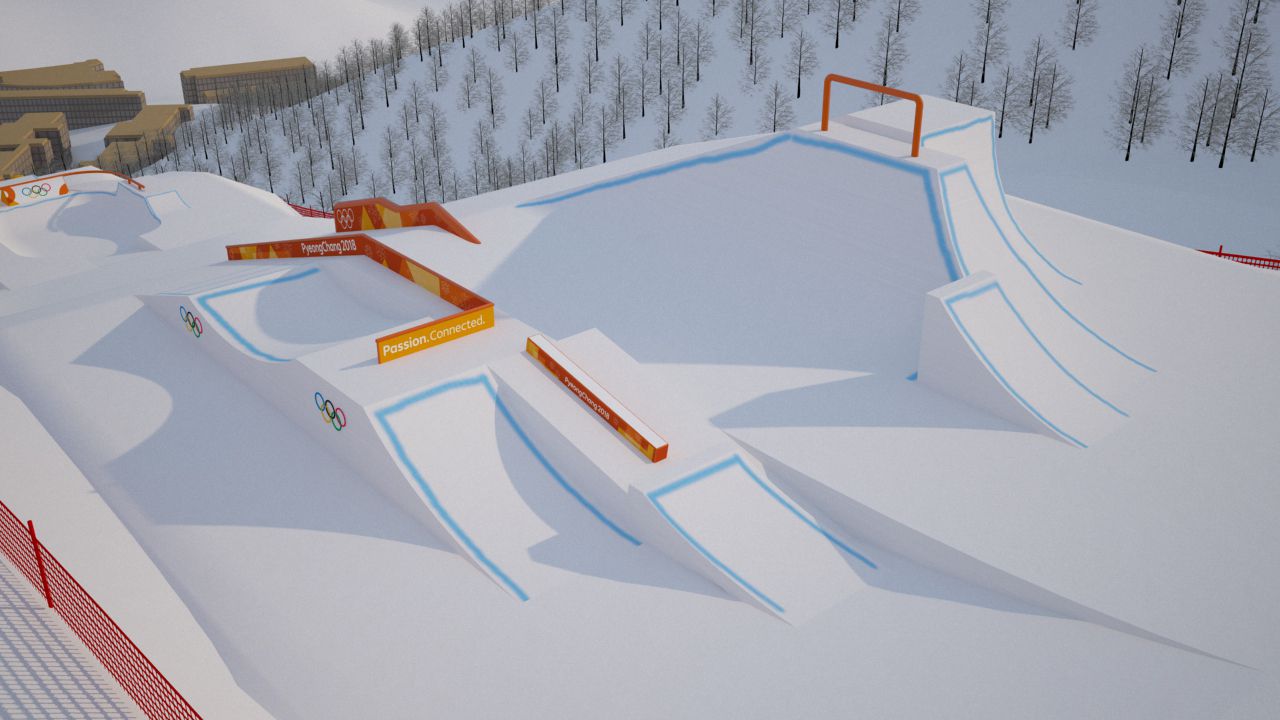Both the skiing and snowboarding versions of slopestyle became Olympic events for the first time at Sochi 2014, meaning that Pyeongchang 2018 will be only the second time in history that the discipline has featured at this level.
The reigning Olympic champions in the ski slopestyle are Team USA’s Joss Christensen, for the men’s event, and Canadian Dara Howell, in the women’s. Sage Kotsenburg and Jamie Anderson, both American athletes, are the reigning Olympic champions in the snowboard event. Famously, from a British perspective at least, Jenny Jones’ 2014 Slopestyle bronze was GB’s first ever Olympic medal on snow.
Slopestyle involves riders taking it in turns to go down a course consisting of obstacles such as rails, jumps, and various other park features. Points are scored for originality, amplitude, and the execution of the tricks.

History of Slopestyle
Slopestyle was developed as a snowboarding competition format in the late 90s and early 2000s at the Burton Open Series and other events that formed part of the Ticket To Ride (TTR) world tour (now known as the World Snowboard League) as well as the X Games. The terrain parks of the era increasingly began to include rails alongside jumps and halfpipes, and the idea was to create a contest format that reflected how most ordinary freestyle snowboarders actually rode the mountain.
As twin-tip skis (first released by Salomon in 1997) made it possible for skiers to land backwards, they too started competing in slopestyle events. The first X Games slopestyle contest was run in 2002 and was won by the legendary American skier and weed enthusiast Tanner Hall. Hall would later try to take on Jamaican citizenship in a bid to compete at the Olympics.
The other freestyle skiing and snowboarding events that feature at the Winter Olympics are moguls, Big Air, halfpipe and ski cross/boardercross. There are also older skiing events that predate the twin tip revolution, like moguls and aerials.
How is Slopestyle Judged?
As with any judged sport, the process of judging slopestyle in the Olympics has come in for some criticism. Riders and skiers who score low are routinely hacked off. But when you look at the process and the criteria used to judge slopestyle, it actually makes a lot of sense.
A panel of six scoring judges each write down their scores, deducting points if they think a rider has fallen slightly short on any of the obstacles. The highest and the lowest scores are then discounted to avoid any outliers or bias. The final score is an average of the remaining four judges scores.
“Sometimes when there’s a very tight decision, the head judge will leave you a little bit more time so you can compare the runs.”
A head judge, who doesn’t give his own score, oversees the process. Iztok Sumatic, a Slovenian who worked as a scoring judge on the last Olympics at Sochi, explained to our sister title Whitelines: “Sometimes when there’s a very tight decision, the head judge will leave you a little bit more time so you can compare the runs.
“So you have your memory board, where you put down all the tricks, all plusses and minuses and stars and smileys and whatever you put down, and you look back at that and compare the runs.”
This is why judges sometimes spend longer deliberating, although they never talk to each other or compare notes. Sumatic also said: “At the end of the day it’s a subjective opinion but if the highest and lowest scores drop out then you get an objective score at the end. It’s a democracy.”
What are the Slopestyle Judging Criteria?
The points given by the six scoring judges are out of 100 and are awarded for overall impression, based on six key criteria.

Amplitude – How big a rider or skier goes over the jumps or off the rails. However unlike halfpipe, bigger is not always better. If a rider totally overshoots a landing for example, they won’t be scored as highly as if they land right on the sweet spot.
Difficulty – It goes without saying that some tricks are more difficult than others. So for example a 1620 will score higher than a 1440 over a jump, and a 270 onto or off a rail will score more highly than hitting it straight.
Execution – How well a skier or rider executes a trick. Broadly speaking, this equates to “style”. Landing cleanly will score you more than putting a hand down. Similarly holding a grab for the whole spin will get you more points than just tapping your board (or skis).
Variety – How different a rider’s tricks are. Judges like to see riders and skiers mixing it up and showing they can spin all four ways. As a snowboarder if you do three identical 1620s off the three kicker features, you won’t score as highly as someone who mixes it up by spinning frontside on the first one switch backside on the second and backside on the third. Similarly with skiers and leftside or rightside spins.
Progression – If a trick is brand new ie. has never been landed in competition before, it will score more highly. Sage Kotsenberg’s 1620 with a unique holy crail grab in Sochi is a great example of this. Judges want to see the sport being pushed forwards.
Combinations or flow – This is closely linked to variety. Riders will score higher if they link features in a fluid manner. Reverting between obstacles (changing from regular to switch) is frowned upon. Creativity, or using the features in an unconventional manner, is rewarded. This could be particularly interesting given Pyeongchang’s unusual Olympic slopestyle course.










